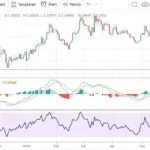The U.S. dollar (USD) has long been the world’s dominant currency — a benchmark for trade, finance, and investment. However, when the dollar strengthens significantly, its impact is felt far beyond American borders. For emerging markets (EMs), a strong dollar can be both a challenge and a wake-up call, influencing everything from capital flows to inflation and debt sustainability.
In 2025, the greenback continues to assert its power, supported by the Federal Reserve’s high interest rate policy, robust U.S. growth, and persistent demand for safe-haven assets. This article explores how the dollar’s strength affects emerging economies — and what investors and policymakers are doing to adapt.
1. Why the U.S. Dollar Matters So Much
The U.S. dollar is not just America’s currency — it’s the world’s financial backbone.
- Over 80% of global trade is invoiced in dollars.
- Around 60% of central bank reserves are held in USD.
- Many emerging-market governments and corporations borrow in dollars rather than their local currencies.
When the dollar strengthens, the cost of servicing dollar-denominated debt rises, trade balances shift, and local currencies face depreciation pressure.
2. Capital Flows and Investment Pressures
A strong U.S. dollar often triggers capital outflows from emerging markets as global investors seek higher returns and safety in the U.S.
- Higher U.S. interest rates make American assets more attractive.
- EM currencies depreciate, reducing returns for foreign investors.
- Governments in countries like India, Indonesia, and Brazil often respond by raising their own interest rates to stem outflows — which can slow economic growth.
📉 Example: In 2025, the U.S. 10-year Treasury yield remaining near 4.5% has led to reduced foreign portfolio inflows into Southeast Asian markets, causing mild pressure on regional currencies such as the Indonesian rupiah (IDR) and Malaysian ringgit (MYR).
3. Debt Burdens Grow Heavier
Many emerging economies rely on external borrowing in U.S. dollars to finance infrastructure projects and economic development. When the dollar strengthens:
- Debt servicing costs rise, especially for countries with limited reserves.
- Fiscal deficits widen, putting strain on government budgets.
- Corporate borrowers face higher repayment risks, particularly in sectors like energy and real estate.
📊 Case in point: African and Latin American nations with large dollar-denominated debts — such as Argentina, Nigeria, and Kenya — have faced renewed financial pressure as the USD appreciates.
4. Inflation and Import Costs
A stronger dollar typically makes imports more expensive for emerging markets, leading to higher inflation.
- Currencies like the Turkish lira (TRY) and South African rand (ZAR) have weakened, increasing import costs for fuel, food, and raw materials.
- Central banks in these countries are forced to raise interest rates, which can slow growth further.
In contrast, export-oriented economies such as Vietnam, Malaysia, and Mexico may benefit initially as weaker local currencies make their exports more competitive. However, this advantage can be offset if global demand weakens due to U.S. monetary tightening.
5. Trade Balances and Commodity Prices
The dollar’s strength has a direct relationship with commodity markets: since most commodities are priced in USD, their prices tend to fall when the dollar rises.
- This is bad news for commodity exporters (e.g., Chile, Indonesia, South Africa), as their export revenues shrink.
- Oil-importing nations, however, may benefit from lower global prices — though currency depreciation often cancels out the advantage.
⚖️ Example: While crude oil prices eased in early 2025, emerging Asian economies still faced higher local costs due to weaker currencies against the USD.
6. Central Bank Responses
Emerging-market central banks have taken several measures to mitigate the impact of a strong dollar:
- Currency interventions: Selling foreign reserves to stabilize exchange rates.
- Tightening monetary policy: Raising domestic rates to defend currencies.
- Diversifying reserves: Increasing holdings in gold or alternative currencies like the euro or yuan.
Some countries, like India and Indonesia, have successfully maintained relative stability by using macroprudential measures and maintaining healthy reserves.
7. Long-Term Shifts: Toward De-Dollarization?
The persistent strength of the U.S. dollar has reignited discussions on “de-dollarization” — efforts by emerging markets to reduce reliance on the greenback.
- China’s yuan (CNY) and digital currency projects are gaining traction in regional trade settlements.
- BRICS countries (Brazil, Russia, India, China, and South Africa) are exploring alternative payment mechanisms to bypass dollar dependency.
- However, given the dollar’s deep liquidity and trust, true diversification will take decades, not years.
8. Key Emerging Markets Most Affected
| Region | Impact | Notes |
|---|---|---|
| Asia (e.g., Indonesia, Philippines, Malaysia) | Moderate | Higher import costs, slower capital inflows |
| Latin America (e.g., Brazil, Argentina) | High | Debt pressures and currency volatility |
| Africa (e.g., Nigeria, Kenya, Egypt) | Severe | Dollar shortages and inflation risks |
| Eastern Europe (e.g., Turkey, Poland) | Moderate | Dependence on energy imports amplifies impact |
9. Implications for Investors
For investors, dollar strength creates both risks and opportunities:
- Currency risk: Dollar-denominated assets gain value relative to EM currencies.
- Bond markets: EM sovereign bonds become riskier due to higher debt costs.
- Stock markets: Export-driven companies may benefit, while domestic-focused sectors struggle.
- Diversification: Holding a mix of USD and EM assets can help manage volatility.
💡 Investor tip: Focus on emerging markets with strong fiscal discipline, high reserves, and diversified exports — such as Malaysia, India, and Thailand — which tend to weather dollar surges better.
10. Outlook: Can Emerging Markets Adapt?
While a strong U.S. dollar poses short-term challenges, it can also drive structural reforms in emerging markets. Countries are investing more in:
- Building domestic capital markets to reduce dollar dependence.
- Strengthening regional trade agreements.
- Encouraging local currency borrowing.
These efforts may gradually reduce vulnerability — but in the near term, the dollar remains king of the global economy, and emerging markets must continue to adapt to its powerful influence.
Conclusion
The strength of the U.S. dollar in 2025 serves as a double-edged sword: a symbol of economic stability for some, but a source of pressure for others. For emerging markets, it exposes structural weaknesses — high foreign debt, narrow export bases, and limited reserves — while also motivating reforms toward financial resilience.
As long as the U.S. remains the world’s financial anchor, the ripple effects of a strong dollar will continue to shape the fortunes of emerging economies worldwide.














